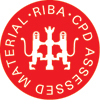Our guests – Giles Meredith from the Health and Safety Executive (HSE) and James Ritchie from the Association of Project Safety (APS) – discuss the role of CDM coordinators, including how and when they should be appointed, how one judges competency, and how existing risks such as lead paint should (and should not) be handled.
More discussion follows on designer and architects' responsibilities regarding 'future-proofing' schemes: for example where subsequent design changes could affect maintenance regimes. Giles and James then offer tips on 'usability' and how one quantifies 'significant risk' and the question of judging what is a proportionate response.
Throughout the programme, we highlight relevant HSE-led prosecutions, including a recent case where bad design directly led to the death of a contractor who was carrying out routine maintenance.
About the contributors
Giles Meredith is the portfolio holder for designers and CDM Coordinators in the Health and Safety Executive's Construction Management Unit.
Much of his time is spent working with design stakeholder groups, working to produce and improve guidance for designers on CDM and their wider health and safety responsibilities.
Giles has worked for HSE for 13 years, most of that time working with the construction industry as a regulatory inspector. He has experience of various major projects and led the HSE relationship with the Heathrow Terminal 5 project.
James Ritchie is Head of Corporate Affairs at the Association for Project Safety. He is a CDM Coordinator and a chartered architect who has been in private practice for more than 25 years.
Before accepting his current role, he was the principal of James Ritchie Architects based in Northumberland, undertaking architectural and CDMC commissions across the North of England.
James lectures regularly and is also a visiting lecturer at the University of Newcastle-upon-Tyne School of Architecture, specialising in Professional Practice, Construction Health and Safety and 'Buildability' issues.
 Disclaimer: NBS TV programmes are the intellectual property of RIBA Enterprises and it shall be a breach of this right to copy, or in any way exploit commercially or show in public any of the programmes without the express permission of RIBA Enterprises.
Disclaimer: NBS TV programmes are the intellectual property of RIBA Enterprises and it shall be a breach of this right to copy, or in any way exploit commercially or show in public any of the programmes without the express permission of RIBA Enterprises.
